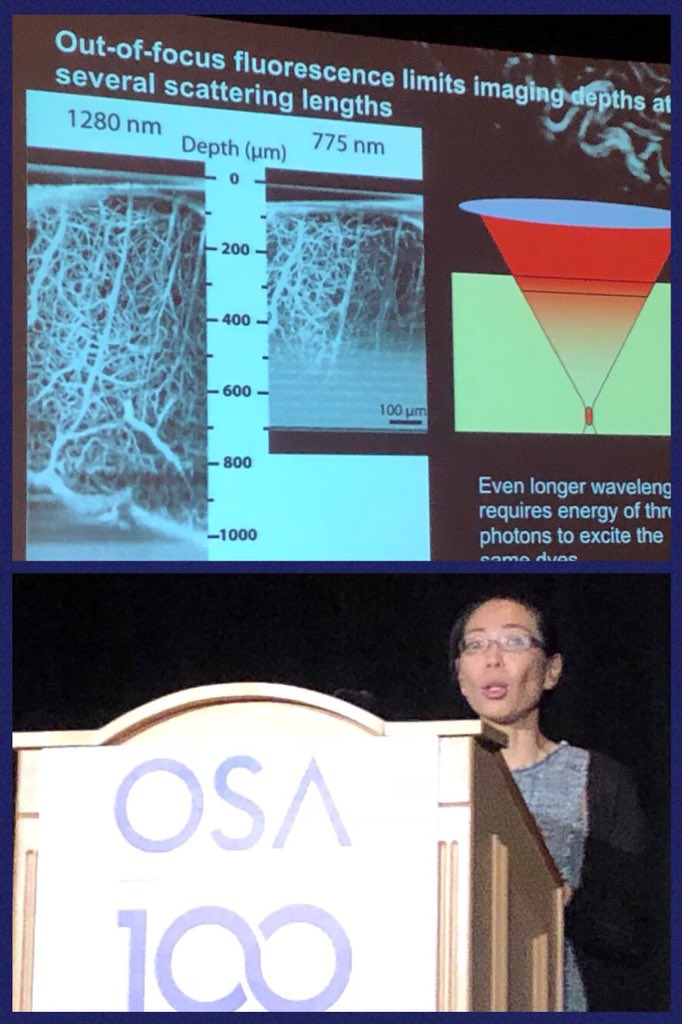
Nozomi talked about "exploring natural behaviors of cells in the wild with in vivo multiphoton microscopy". The congress was in the Diplomat Beach Resort, Hollywood, Florida United States

Following a heart attack, patients often experience long term consequences, due to the limited capacity of the heart to repair following injury. Some cells in the heart have been implicated in the repair of blood vessels and heart muscle cells after injury. This project aims to use in vivo multiphoton microscopy of the heart to understand how these cells interact with their environment following injury. Title of project is " The Influence of Hypoxia on Cardiovascular Precursor Cells Following Injury using In Vivo Multiphoton Microscopy"
The Optical Society of America is celebrating the 40th anniversary of the founding of the journal Optics Letters. For this anniversary, they published the list of the most cited papers from the journal. Chris’s 2001 paper on laser micromachining using low-energy, high repetition rate trains of femtosecond laser pulses is the 34th most cited paper of all time in the journal, with 628 citations as of January of this year. https://www.osapublishing.org/ol40/most-cited-OL-papers.cfm
Congratulations to Amanda Bares, a 6th year PhD student in the lab, for winning an Emil Wolf Outstanding Student Paper Competition prize at the Optical Society of America, Frontiers in Optics conference last week in Rochester, NY. Her paper, “Hyperspectral Imaging in Live Mouse Cortex Using a 48-Channel Multiphoton Microscope,†was chosen as a finalist during the paper review process. Finalists were judged on their conference presentation “based on their work’s technical advances and value to the technical community of interest, and their skill of public presentation.
Chris recently discussed some of our ongoing work using optical techniques to determine the cause of reduced brain blood flow in Alzheimer’s disease.
Link to video at The Optical Society
Liz Wayne is one of eight recipients of the 2013 Cook Award. The Cook Award is named in honor of the late Constance E. Cook, Cornell’s first woman vice president, and the late Professor Emeritus Alice E. Cook, founding member of the Advisory Committee on the Status of Women. The Award honors individuals who deserve recognition for their commitment to women’s issues and their contributions for changing the climate for women at Cornell. Liz was nominated by Dr. Sheri Notaro in acknowledgement of her achievements and contribution to the Cornell community. In particular, for organizing the Northeast Conference for Undergraduate Women in Physics. The awards ceremony will be held February 28th, 2013.
In two new papers that appeared this week, the Schaffer-Nishimura lab continues to increase our understanding of how bleeds from small blood vessels impact the health and function of nearby brain cells. A short review paper that appeared in the journal Stroke outlines differences in impact of a clot or hemorrhage to a small blood vessel in the brain, emphasizing the greater destruction caused by occlusions and the potential role of inflammation in driving cognitive dysfunction after microhemorrhage. An original article that appeared in PLoS ONE shows that microhemorrhages cause a temporary loss of the ability of nearby neurons to respond to a peripheral stimulus, but that these cells recover normal function in the hours after the injury. Together these articles advance our understanding of how small brain bleeds may contribute to cognitive decline.